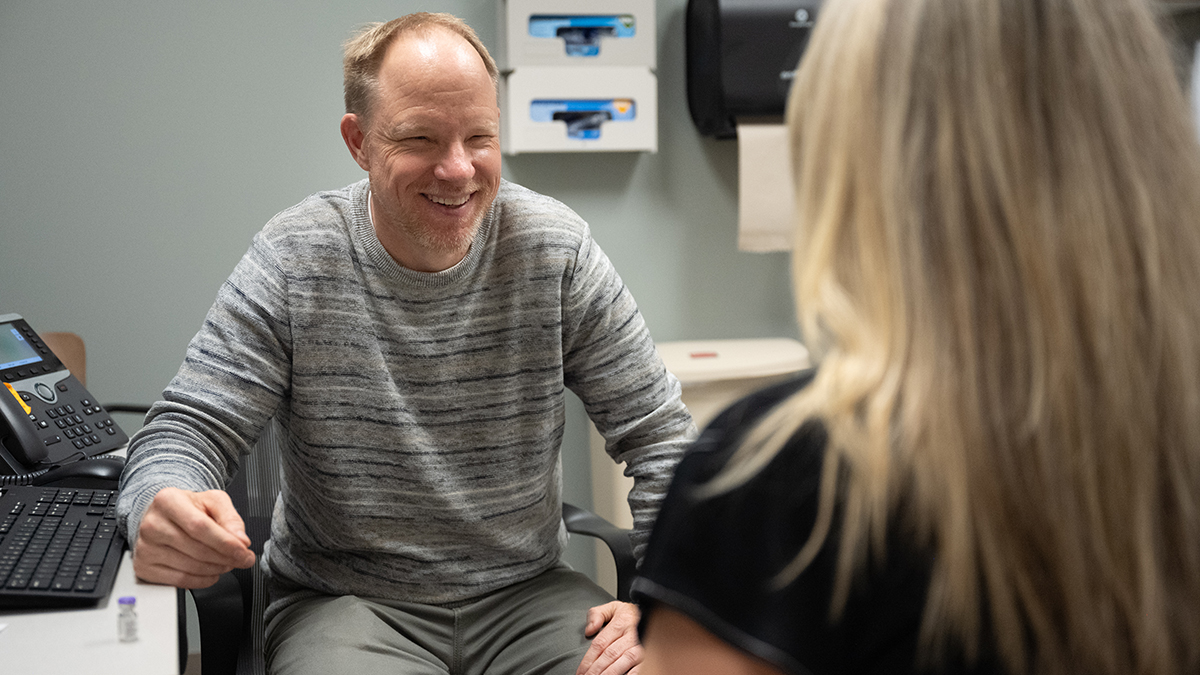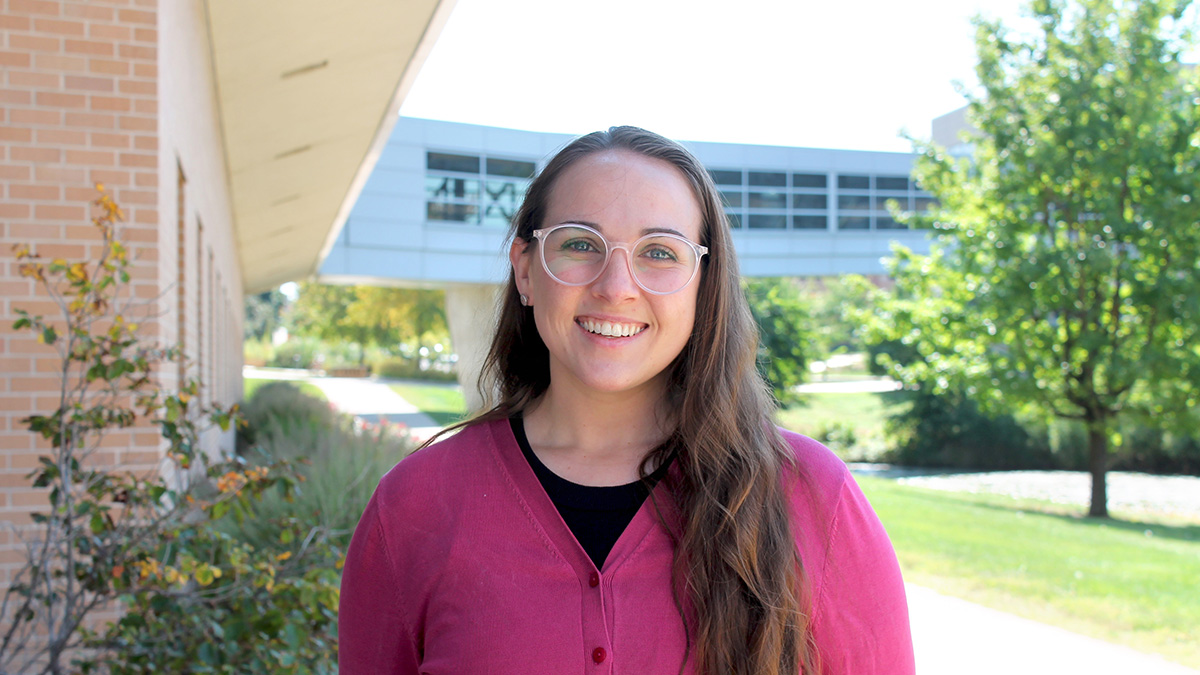
Three School of Pharmacy alumni are building pharmacist-led clinics that bridge gaps in care and strengthen patient outcomes
By Katie Ginder-Vogel
When pharmacists practice at the top of their licenses, they’re able to impact patient health outcomes and make valuable connections with vulnerable patients.
Three alumni of the University of Wisconsin–Madison School of Pharmacy are doing exactly that, by pioneering pharmacy involvement in specialized clinics to help improve outcomes through direct patient care. From heart failure to pulmonary health, pharmacists are leveraging their expertise to help patients manage their diseases.
“I wanted the opportunity to expand the boundaries of what a pharmacist can do, and I’ve been fortunate to have this opportunity after completing my training,” says Jordyn (Kettner) Salzgeber (PharmD ’22), who led the launch of a pharmacist-run clinic for heart failure patients. “I’m practicing at the top of my license, pushing the boundaries of my degree to provide the best care to patients.”
Optimizing heart care through clinical pharmacy
Salzgeber lost her grandfather to heart failure during her first year of residency at the Kansas City VA Medical Center in Missouri. Shortly after this loss, she had a rotation in the heart failure clinic, and her grandfather’s experience stayed with her.
“Heart failure patients take a lot of medications, and pharmacists can make a huge impact by making sure they’re taking the right doses, tolerating their medications, and understanding their medications,” Salzgeber says. “My grandpa didn’t have a pharmacist on his care team, and I feel like he would have benefited from that, which inspires me to help my patients.”

Salzgeber brought her appreciation for VA pharmacists’ independence to her PGY-2 ambulatory care residency at UW Health. In 2023, as part of her residency, she piloted a pharmacist-run clinical service in UW Health’s cardiology clinic, now at the Eastpark Medical Center. Past pharmacists in the cardiology clinic initiated a collaborative practice agreement to allow pharmacists to start, stop, and adjust medications for heart failure patients, but they hadn’t yet implemented the service.
With Salzgeber on board, providers referred patients to the clinic for help with lipid management and heart failure medications.
“I was able to build out the clinic with a few dedicated hours each week, while balancing my other residency responsibilities,” Salzgeber says. “I then had the opportunity to create a business case and support it with data as to why the pharmacy department should establish a full-time pharmacist position within the cardiology clinic. This position was approved, and I was selected to stay in the role. It’s my dream job.”
Salzgeber primarily offers telehealth appointments via video or phone, and some in-person visits.
“I wanted to expand access to care,” she says. “We help patients across Wisconsin and surrounding states, and they can’t all get to the clinic weekly or biweekly.”
“My grandpa didn’t have a pharmacist on his care team, and I feel like he would have benefited from that, which inspires me to help my patients.”
–Jordyn Salzgeber
The clinic began with a small group of providers but over the past two years has expanded to serve all UW Health cardiology providers. Salzgeber divides her time between UW Health’s Eastpark and Arbor Gate clinics.
“I’m actively managing about 150 patients at a time, following patients for a short period of time — weeks to months — before discharging them back to their provider for further care after we feel their medications are optimized, depending on their vital signs and laboratory test results,” she says.
Since the clinic started, Salzgeber has seen about 300 patients total, including patients with heart failure and hyperlipidemia. She also supports patients with weight loss and cardiovascular risk reduction medications and answers provider questions about drug and supplement interactions and medication costs.
“We are independently providing care to patients and collaborate closely with provider groups and clinical staff,” she says. “I see about 12 scheduled patients a day, plus follow-up phone calls and answering provider questions.”
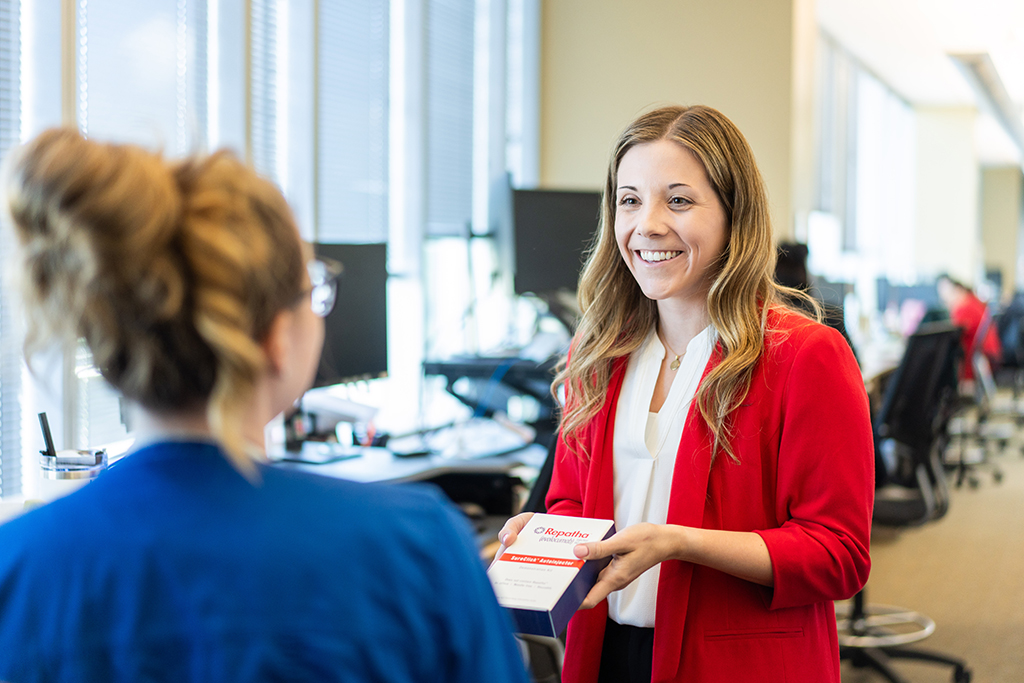
Salzgeber also spends time immersed in peer-reviewed literature to ensure the clinic is in line with the most up-to-date, evidence-based recommendations for medication therapy and clinical practice. She also provides medication and lifestyle education, tracks patients’ vital signs, and helps patients with medication access and cost assistance.
“With newer cholesterol therapies and brand-name heart failure medications, we can leverage pharmacists in clinic to address cost barriers, reduce medication costs, and even find free drug programs,” she says.
An initial evaluation of the program found an increase in the prescription of newer, guideline-directed heart failure medication that aligned better with recommended guidelines than the typical standard of care.
“When I graduate patients from my program, there are tears shed,” Salzgeber says. “It’s a wonderful opportunity to connect with patients frequently, which helps me provide them with better care.”
Salzgeber is grateful for the training she received at the School of Pharmacy, including completing the Path of Distinction in Leadership, and plans to invite students to train in her clinic. She says there are many career opportunities for pharmacists to get involved in guideline-driven disease states, like heart failure and hyperlipidemia.
“The School of Pharmacy helped me build a strong foundation of clinical knowledge, a compassionate approach to patient care, and leadership skills to develop this pharmacist-led clinical service,” she says. “The School of Pharmacy does a good job of emphasizing the breadth of a PharmD degree and how innovation can impact patient care. I hope to have a high student presence in my clinic. It’s a unique area and a wonderful opportunity for learners.”
Integrating pharmacy into heart failure care
Kelly Thomas (BS ’20, PharmD ’23) completed her PGY-1 and PGY-2 residencies at SSM Health Monroe Hospital in Wisconsin, where she did a research project that analyzed positive heart failure outcomes when pharmacists were involved. She helped SSM Health Monroe increase referrals to pharmacists for heart failure management and applied to be the first pharmacist to join the heart failure clinic at SSM Health Madison.
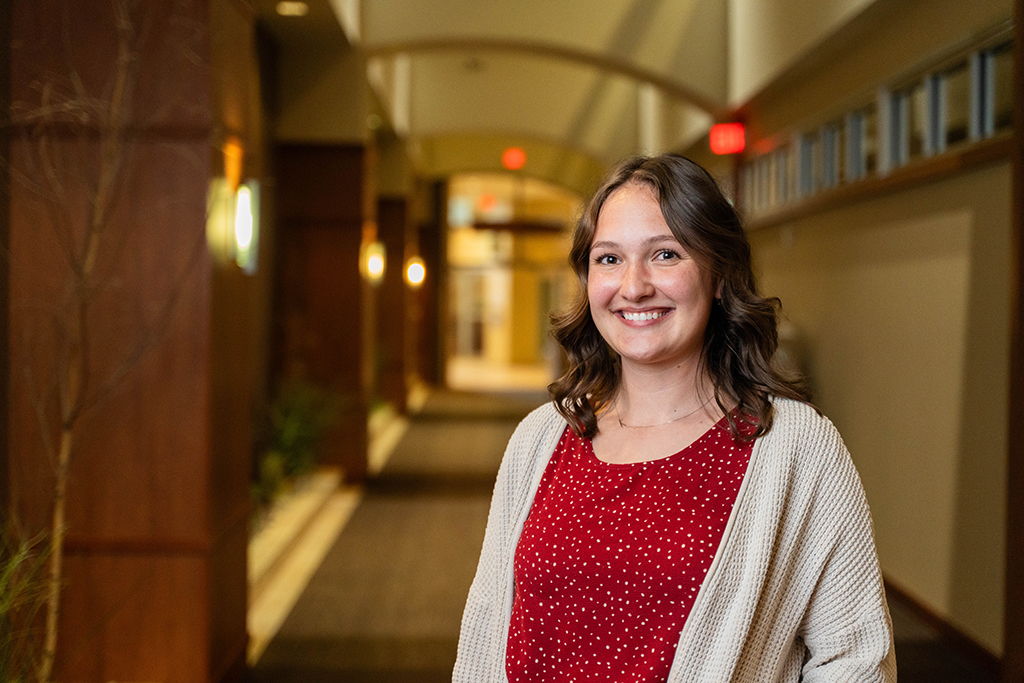
“We’ve added my role as a pharmacist to the existing heart failure clinic, which is led by nurse practitioners and nurses,” Thomas explains. “Patients are referred by cardiology or at hospital discharge to work with our clinic, and our goal is to optimize their medication therapies using guideline-directed medical therapy (GDMT) and monitoring their status.”
The clinic’s providers currently see nine to 11 patients per day, and Thomas can see up to 10 patients a day, improving provider access, helping patients get medications more quickly and have doses adjusted as needed to reach their dosage goals faster.
“I can help start meds for eligible patients and increase dosages to the maximum tolerated dose,” she says. “I’ll also see patients for education and medication follow-up, in person or via phone or video.”
Thomas can also see patients at more frequent intervals, every two to six weeks, for follow-up appointments.
“It’s nice to be able to keep a close eye on them and have many opportunities to support them,” she says. “I really like the role we can have with patients. We get to know them personally, and as we’re able to get them on meds and to their target doses, we can physically see improvements in how they’re feeling and what they’re able to do at home, and that’s really rewarding.”
Thomas says clinical pharmacists across SSM health also assist patients with medication costs and access, which can be a huge barrier. Pharmacists share resources to help reduce the financial burden of medication.
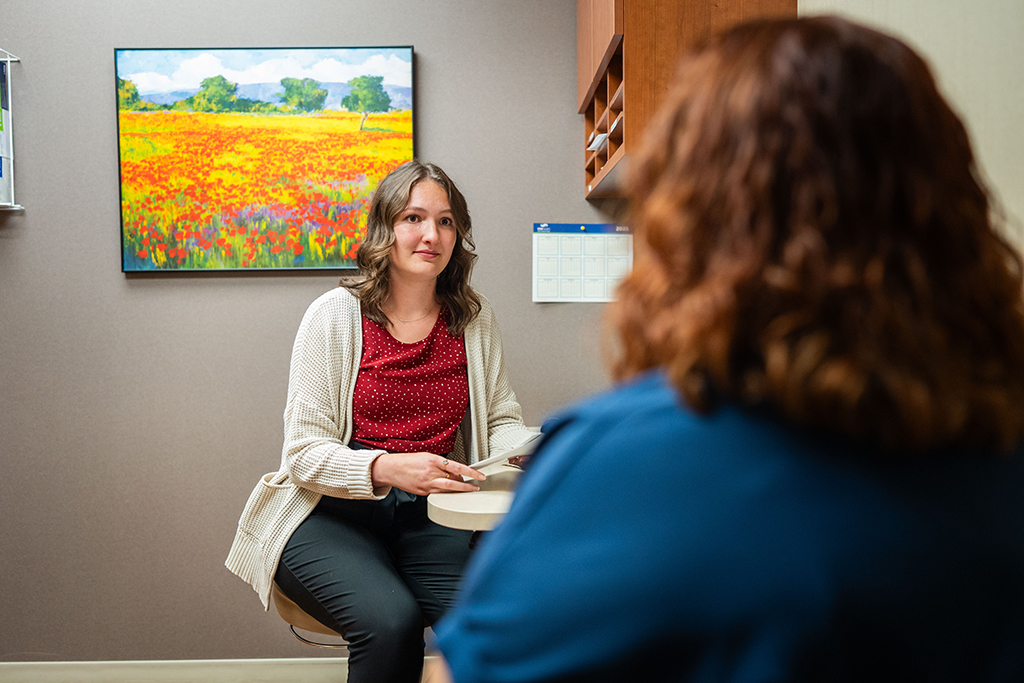
“I know our primary care teams appreciate that,” she says. “We can help patients feel supported and in control.”
Thomas’ overarching goal is to help patients feel better, function more fully, and stay out of the hospital.
“Helping them understand their condition and how their medications can help them goes a long way to improving adherence and compliance,” she says.
Thomas says her instructors at the School of Pharmacy instilled the importance of multidisciplinary care in her, and her frequent interactions with medical and nursing students throughout pharmacy school, especially in ambulatory settings, was helpful.
“It’s important to know how you can be a resource to other disciplines,” Thomas says. “I was part of the rural health program, which gave me the tools to think about showing and assessing the impact we have as pharmacists on a larger level. As we continue to expand pharmacy services at SSM Health, we’re always looking to show how impactful we are, and the program helped me with that thinking.”
Breathing new life into pulmonary care
Brooke Foster (PharmD ’18) is expanding the work begun by the first pharmacist in Froedtert Hospital’s pulmonary clinic in Milwaukee. In the clinic, Foster manages cystic fibrosis, COPD, asthma, tobacco cessation, and biologic medication management.
As a PGY2 ambulatory care pharmacy resident at Froedtert Health, Foster worked on a new service development project to involve pharmacists in asthma and COPD management.
“In primary care, we had a robust pharmacist-led diabetes and hypertension management program, but we didn’t have anything in the asthma/COPD space, and we know those conditions drive hospital admissions and readmission,” Foster says. “I started to see how pharmacists could be leveraged in that space.”
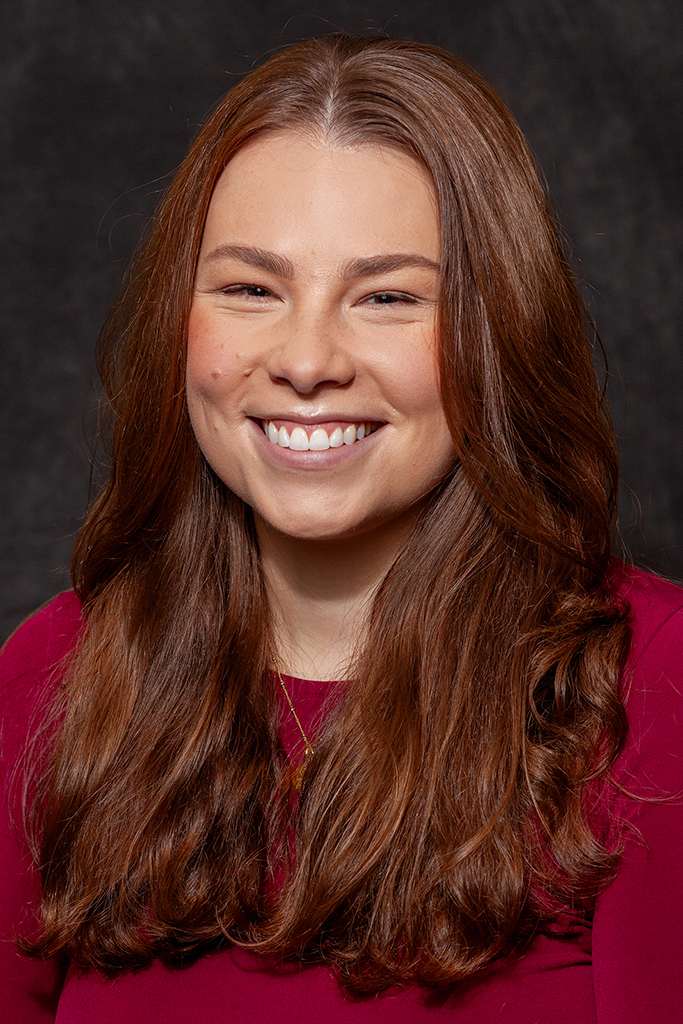
She collected initial data, starting with COPD, based on readmission data, then set up a collaborative practice agreement for high-risk COPD patients. Hospital leadership understood the readmission concerns for COPD and asthma patients and supported the idea of using pharmacists to help with medication management.
“Not every patient with COPD or asthma has a pulmonologist — it’s managed in different ways, so we had to figure out how to identify the highest-risk patients who need a pharmacist, specifically,” Foster explains. That work led to the launch of a population health program at the hospital, directed at identifying COPD and asthma risks. She published her initial data in the American Journal of Health-System Pharmacy in 2023, highlighting how pharmacist engagement with asthma and COPD patients helped improve their symptoms and medication adherence.
When Foster completed her residency, she started a faculty role at the Medical College of Wisconsin and spent two or three days a week at Froedtert for the clinical portion of her job. That allowed her to bring her project idea to life.
“I was able to take my new service development project idea and bring it to life,” she says. “I piloted the COPD piece and added asthma management that first year, taking referrals from the primary care clinic and through population health.”
About three years ago, Foster brought the program from primary care to the pulmonary clinic and now wears many hats in her role. For example, she is part of the pulmonary clinic’s cystic fibrosis team.
“CF is a genetic condition with lots of very expensive medications and new research and treatment options, but with that comes navigating the pharmacy landscape in increasingly challenging ways,” Foster says. “The Cystic Fibrosis Foundation now recommends that pharmacists be a required part of a CF patient’s care team nationwide, and national data shows that when pharmacists are on a care team, adherence and outcomes improve.”
Foster also manages tobacco cessation referrals and handles injectable biologic medications.
“We’re getting new indications for those very rapidly these days, and with the high cost of medications that patients inject at home, I help them access the right one, with the right dose and the right indication, and I make sure they know how to use it once it’s been approved,” Foster says.
“We’re trying to streamline getting people the right inhaler the first time.”
–Brooke Foster
New medications have also come out to treat COPD over the past year, so Foster helps care teams understand the best scenarios in which to use them and the logistical aspects of getting them into patients’ hands.
“We have a new pilot program, with another pharmacy team, hitting on inhaler access,” Foster says. Inhalers can be difficult to afford, but pharmacists can provide transparency about their cost, how to navigate an insurance deductible, and how to use the inhaler effectively.
“We’re trying to streamline getting people the right inhaler the first time,” she says. “That just started and is in its first three months.”
Foster’s experience at the School of Pharmacy prepared her to work in an interdisciplinary setting like the pulmonary clinic.
“I was the pharmacy liaison for MEDiC for a year, getting pharmacy students engaged and advocating for pharmacists within the broader organization,” Foster says. “That taught me to work in an interdisciplinary setting and got me thinking about how to take existing clinics and better meet patient needs with quality improvements. That mindset has carried through to my current role.”
Foster also co-led what is now the Michelle Tracy Preventive Health Clinic at Porchlight Inc., in collaboration with a medical student.
“The School of Pharmacy culture helped me learn to take ownership of my own success and taught me the importance of initiative,” she says. “I still have the same mindset today.”
